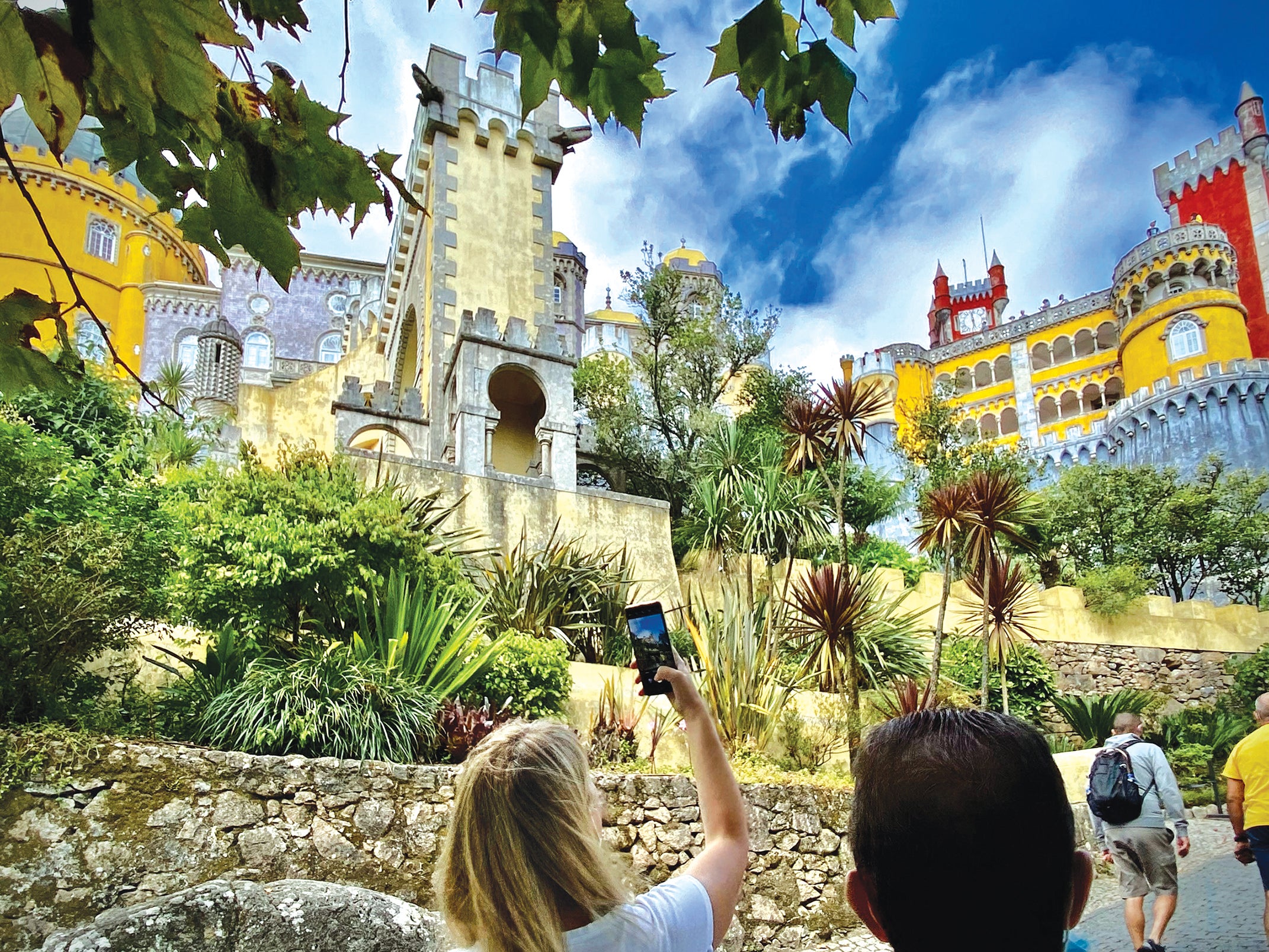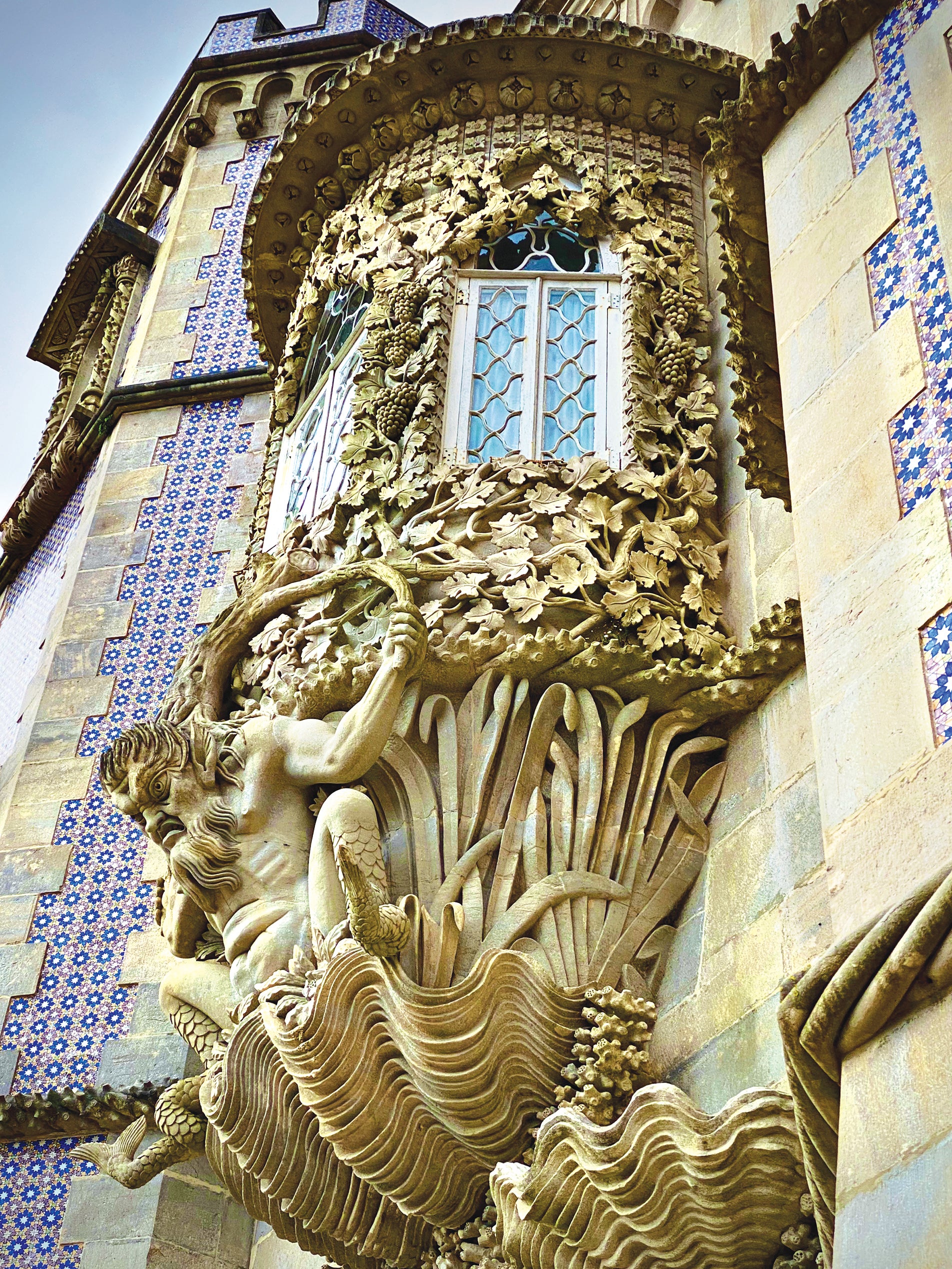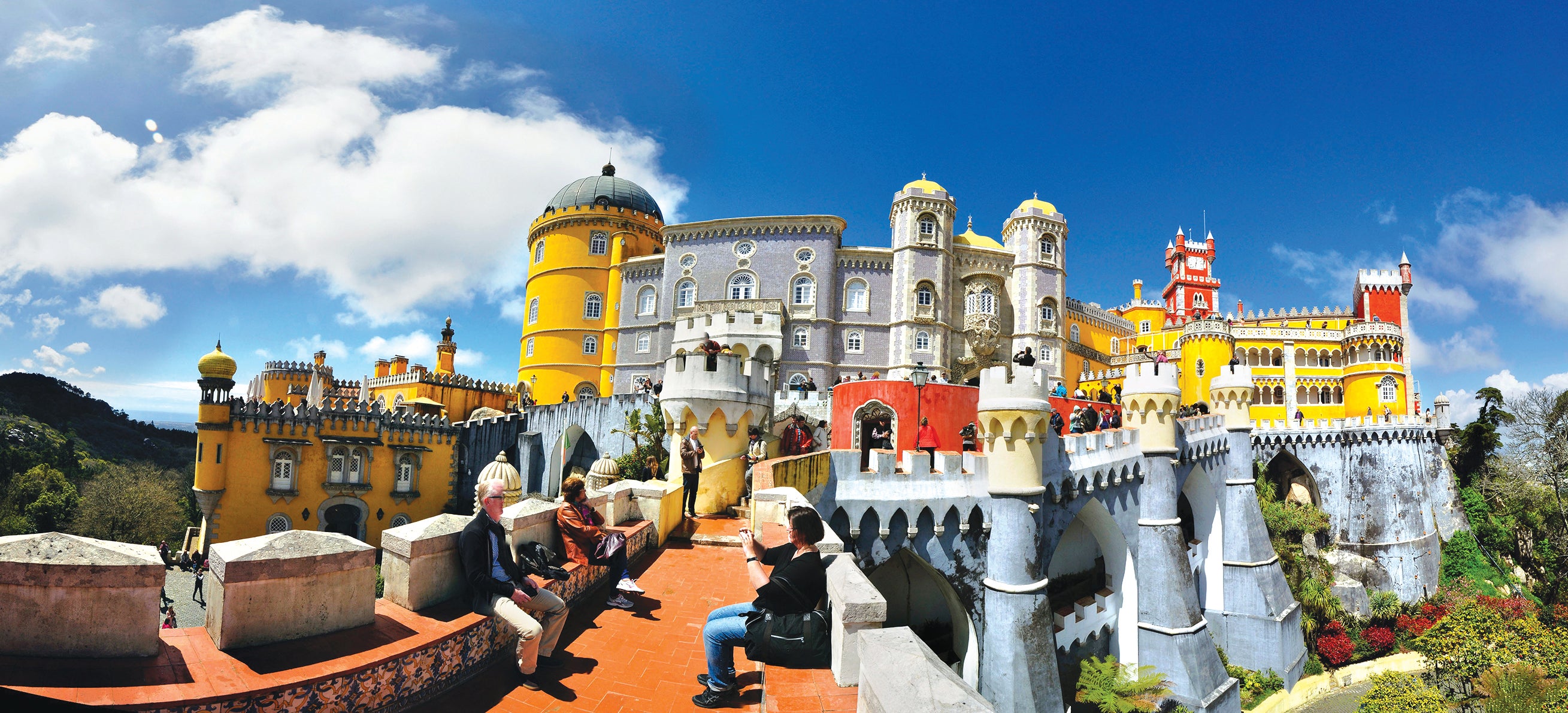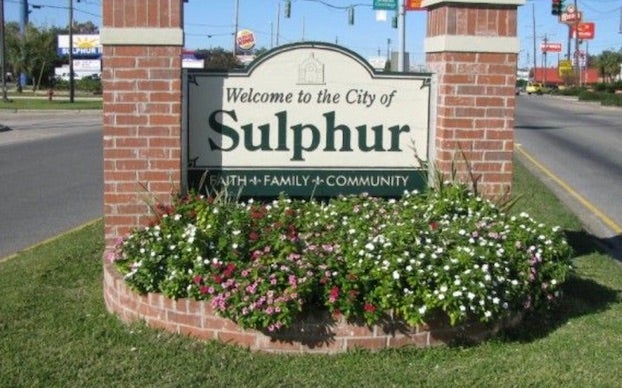Romantic castles of Portugal: Elaborate structures eclectic architectural fusions
Published 5:54 pm Monday, January 17, 2022
By Mary Richardson
It’s beautiful but looks like the designer was drunk,” I mused.
Monserrate Palace, decorating the hills outside Sintra, Portugal, was in front of me, and it looked like the most outlandish, utterly romantic, and wildly impractical Morrish-Gothic-Indian piece of architecture imaginable. The architect must have been under some very special influence, I thought.
As it turned out, I was right. Wine, specifically Port wine, indeed motivated and shaped not only this building, but the history of Sintra and Portugal.
Monserrate was built by Englishmen, at least one of whom was reported to be regularly inebriated. For centuries, the English and the Portuguese had a lucrative and symbiotic relationship based on port. The Portuguese developed this fortified wine in the 1700s, expressly for the English market. The English drank so much port they even established a “three bottle a day” club. And, according to the National Geographic Traveler book on Portugal, the crusaders under John of Lancaster drank so much port that “the English army was seldom sober.”
That same author stated that this special relationship “brought a new breed of Englishmen to Portuguese shores: English merchants and minor aristocrats in search of mild climes and copious sources of inebriation.”
Monserrate, in its exuberant wildness, is a visual rendition of this special relationship.
My husband, Joe, and I came across Monserrate on a hiking trip arranged for us by Portugal Nature Trails. We had just left Lisbon and were headed about 16 miles west to the town of Sintra, a World Heritage Site reported to be one of the most beautiful towns in Europe. About half way there, our path entered the palace’s botanical garden.
We walked by mossy green grottos, along a lazy river and melodious waterfall, and crossed a stone bridge spanning a peaceful lake. Our meanderings, unbeknownst to us, were leading us into the ruins of an ancient chapel. An ethereal beam of light illuminated a cross almost hidden in the ferns. Moss covered piles of stones lay jumbled next to crumbling walls. I thought I could feel the spirit of medieval penitents who first worshiped in this sacred space.
That turned out to be wrong. The chapel was a “folly,” a fake ruin built in the 18th century to invoke a romantic atmosphere by an eccentric Englishmen named Gerard DeVisme.
DeVisme was a very rich man. In 1790 he heard that Monserrate had been destroyed by the devastating earthquake of 1755 and was available, so he leased it. He immediately razed a semi-ruined chapel – a real one – that dated back to 1540, and built a neo-Gothic mansion in its place. Then he built a new “ruined” chapel in the woods below, the one where I felt the spirits of the dead.
Two other Englishmen played important roles in the palace. William Beckford, reported to be the wealthiest man in England, was the next owner. In 1785 he was forced into exile because of suspicions of being homosexual, so he moved to Monserrate. According to the National Geographic book, he thought DeVisme’s palace was a “barbarous gothic” structure. But he hadn’t moved there to remodel, but to party hard and heavy. That he did, scandalizing the people of Sintra. Then he abandoned it and Monserrate fell into decay.
In 1809, a 21-year-old English poet named Lord Bryon spent three days in Monserrate and Sintra, lured by its reputation for elegance and decadence. He wrote that the village was “the most delightful in Europe,” and, in his poem “Child Harold,” he called the deserted Monserrate a “glorious Eden.” This increased Monserrate’s fame and
eventually attracted its next buyer, Sir Francis Cook.
In 1863, just after he had been named Viscount of Monserrate by the King of Portugal, Cook bought it and rebuilt it into the fantasmagorical palace and gardens that are there today. His descendants lived and partied in the palace until after World War II, when they could no longer afford the upkeep. In 1949 the Portuguese state acquired it, undertaking extensive repairs needed by that time. Monserrate was finally opened to the public in 2010. The old stable buildings were converted into a restaurant where today one can sit under the old trees to have a little tipple and think of England.
The next day Joe and I climbed to a jagged rocky outcrop in the steep hills of the Sintra Mountains to reach the Pena Palace, another UNESCO World Heritage Site. We walked over a drawbridge and entered a world fit for fairy tales.
With its conglomeration of domes, turrets, and towers, one style seemed impossible to pin down. A guide book said it was “neo-Gothic, neo-Islamic, and neo-Renaissance,” but it looked 100 percent Romantic to me. I could easily imagine a bevy of Disney princesses waving from the clock tower.
It wasn’t always this splendid. In the late 15th century, after an apparition of the Virgin Mary appeared there, a tiny monastery was built on the site. That monastery was destroyed, first by fire and then by the earthquake of 1755 (the same one the ruined Lisbon and Monserrate). A young prince, Ferdinand II, saw the ruin and immediately loved it. In 1838 he decided to build a palace on the site for the royal family’s summer residence.
Royalty lived in the palace until the State of Portugal purchased it in 1889. The Republican Revolution of 1910 abolished the royalty, and the state turned Pena into a museum. The deposed queen of Portugal, Queen Amelia, spent her last night as queen in the palace, before going into exile.
Joe and I were visiting Pena on a sunny, warm, blue-sky day in September. All the visitors were smiling. People were taking selfies under the arches, with the Atlantic Ocean shimmering in the background. Children were making faces at the gargoyles. Families were eating pastries on terraces once the domain of princesses. There was lots of laughter.
Our next stop, although less than a mile away, couldn’t have felt more different. It was the somber and monochromatic Castle of the Moors. The Moors came to Portugal in 710 and ruled for almost five centuries. In 1147 the Christians were finally able to take back the Iberian peninsula during the “Reconquista.” The Moors surrendered this castle peacefully.
The castle fell into ruin, until King Ferdinand II – yes, the same Ferdinand who built Pena Palace – bought it in 1840. He restored it, building a monument to collect the bones unearthed in the restoration, and rebuilt the stark, unadorned chapel.
We walked on top of the tall, wide, very gray granite walls, marveling at the expansive views. Then we realized, to our surprise, that the historic center of Sintra where we were staying was about 1000 feet directly below us. It felt like we could reach down and touch (or pour boiling oil on) our hotel! I wondered why the Moors gave up this place, seemingly so easy to defend, without a fight.
Later that day we wandered the narrow roads and alleys of Sintra. The town is indeed beautiful; a guide book describes it as ‘verdant, romantic, and intensely evocative.” It also has a very cosmopolitan feel, reflecting the fact that it is home to one of the largest foreign expat communities in Portugal.
People were sitting outside, talking and laughing. Musicians were playing in the squares. At dusk, fabulous smells came from the numerous restaurants specializing in dishes such as Bacalhau à Brás (shredded codfish mixed with scrambled eggs, onion and olives -11 euros), and Bochecha de Porco Estufada en Vinho Tinto (pork cheeks stewed with red wine – 13,50 euros).
Night fell. We looked up at the mountain towering over us to see the Castle of the Moors flooded with bright, white lights. It looked like Sintra was wearing a crown.
It was time for libations. A tea shop was on our left; a wine store on our right. What to do? We thought of the crazy Englishmen who, with the help of port wine, influenced the art and culture of this area. In their honor, we turned right.









